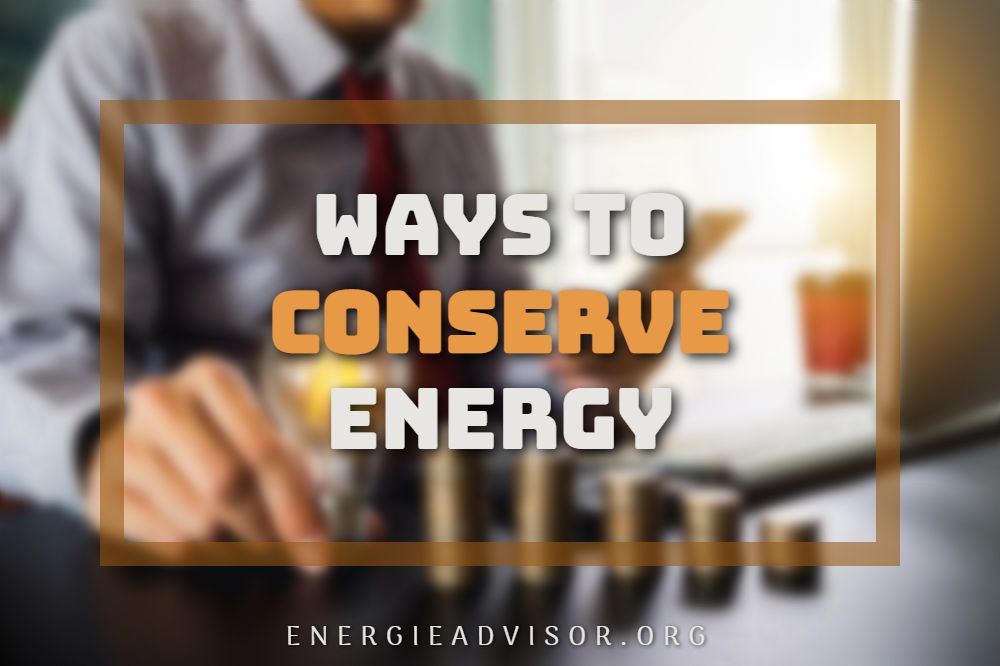So, you have decided that it is time to reduce the amount of energy you use for running your household, but you just don’t know where to start. You were probably motivated by the desire to save up some money on utility bills, but there might also be an idea of environmental protection in the back of your mind, which is great and commendable by any means.
If you want to learn how to save energy at home, first of all, it’s necessary to make some simple and small changes in your behavior, but also, you have to start thinking differently, which is a much bigger issue and a much harder task.
We present you now with the top ten ways you can conserve energy. We suggest you first start practicing the advice we put on top of the list because they will be easier to implement, and then continue with those more challenging assignments. Don’t forget that these types of transitions take time, as well as some investment if you truly want the more permanent and significant shift.
1. Replace Light Bulbs
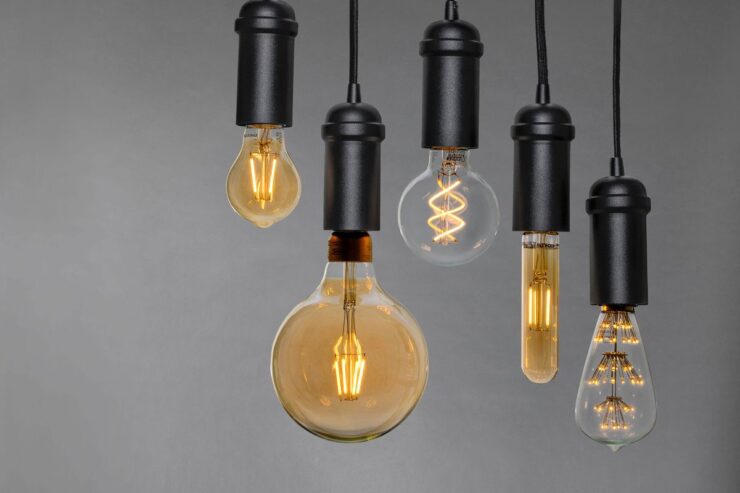
Up until recently, we didn’t know this, but the traditional light bulbs are huge electricity consumers. They are spending a great amount of power, and if you want to start saving up, consider replacing them with energy-efficient alternatives. It would be best to use LED lights, halogen bulbs, indoor solar lights, or CFL lights because they spent from 25 to 80 percent less electricity. For outdoor you can use outdoor solar lights for your garden, deck, or path.
Also, you will be happy to hear that they last from three to 20 times longer than those previously mentioned ones most of us are still holding on to. Yes, the alternative, more efficient bulbs are quite expensive, but only if you look at this as a short-term purchase. But, if you behold it as an investment, and compare their price to their quality, you will see that you will spend less money on these products.
2. Change Your Behavior
The habits we have, when it comes to the way we act around our house are extremely important. If you want to make some changes to your bank account, you need to start by making those in the way you behave and live.
For example, you can practice energy conservation by simply turning off the lights when you leave the room, by washing your dishes manually instead of putting them in a dishwasher every day, or by renouncing the dryer, which is known to be a huge electricity spender and hang-dry your clothes.
Of course, the greatest reduction implies you need to turn down the heat at your apartment during the winter, at least by a few degrees. Another thing that will save you the money is a decision not to use the air conditioner when the summer comes, but instead to turn on the fan.
These two things, cooling, and heating are usually responsible for half of your bills, so these measures will make some changes money wise for sure. Also, you can use an energy monitor to establish which home appliances spend the most electricity on an everyday basis.
3. Use Smart Power Strips
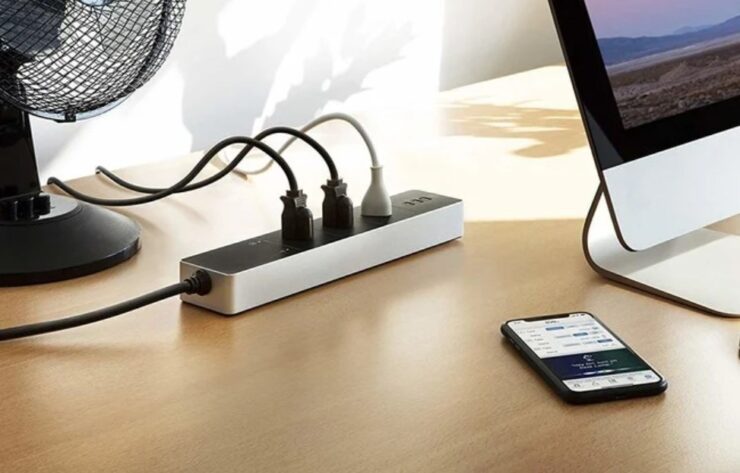
We are all using a lot of electronic devices in our homes, and all of them have “phantom loads” – electricity that’s turning into waste when they are in standby mode or turned off. We are actually not aware of how massive this vain expense is.
It is estimated that around 75 percent of the energy used for home electronics is consumed in those moments when they are not in active duty. And that’s something that can cost us up to $200 each year.
So in order to avoid this, you should buy smart power strips, which can make the phantom load disappear. They will eliminate this problem by completely turning off the power of each electronic device when they are not being used. There are several ways to do that.
You can set up the stripes to turn off the electricity usage at the moments when the appliances are inactive, at the assigned time, with the help of remote switches, or based on the status of a “master” device. Most people agree that this is probably one of the smartest things you can do for our budget.
4. Buy Energy-efficient Appliances
The thorough research showed that all home appliances together consume around 13 percent of total energy use. Given that we need a lot of these electronic devices to maintain a certain level of comfort we are used to, we tend to purchase more affordable items.
The experts in this matter claim that that is a mistake and that we need to pay attention to two numbers. The first one is the one on a product’s price tag, and the second one is its annual operating cost of it.
The truth is that energy-efficient appliances cost a bit more, but if you want to save up long term, you should know that their operating cost is from nine to 25 percent lower than the one conventional models dispose of.
So if you think this is something you might be interested in, when purchasing new household devices, pick the ones that have the “Energy Star “label. That will provide you a federal guarantee that the item utilizes less energy when it is on standby, as well as during the use, than any standard non-energy efficient product.
5. Install Smart Thermostat
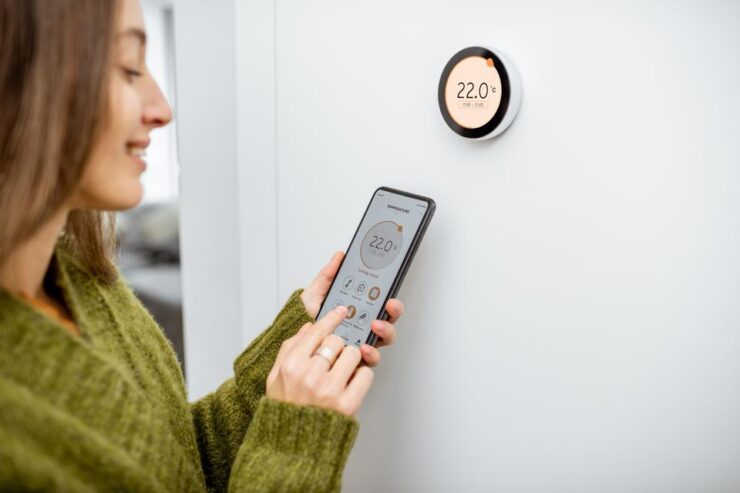
We already said that heating and cooling are wearing up to half of our average electricity bill. That’s why we have to think of a way not to use it when it’s not really necessary. The smart thermostat or programmable one can help us with that.
We can set them up and arrange to automatically reduce or turn off completely the heating or cooling, during those moments when we are not there, or we are sleeping. That way, we will avoid wasting the electricity on these actions, while not making compromises with our comfort.
If you do all the calculations, you will see that by using these devices, you can save up to $200 every year, which is not insignificant. There are different models of programmable thermostats, and some of them have additional features like indicators that will show us when to replace air filters. That will save us some extra money since it will improve the efficiency of our cooling and heating home technology.
6. Set Up Energy-efficient Windows
This is another well-known fact. Low quality and inadequate windows can be a source of enormous energy waste. You might find yourself in a situation where 25 percent of your energy bill goes unused because of this. The trick that will prevent heat loss is to replace a single-pane window with a double-pane one.
If you live in cold regions, it would be best to install gas-filled windows that have “Low-E” coatings since they can reduce the heating waste quite significantly. There are also so-called storm windows (interior and exterior) that are suitable for locations where the weather can be a bit extreme.
They can reduce unnecessary heat loss by up to 20 percent, which is truly something. And “Low-E” coating windows are an excellent solution for a warm climate because they can lower the heat gain by restricting the amount of energy entering your home.
This move will save you around $100 per year, and if you add some curtains, shutters, or screens, you will be in an even better situation money-wise, since those things can provide an extra layer of insulation between the outside heat and your home.
7. Lower Water Heating Expenses
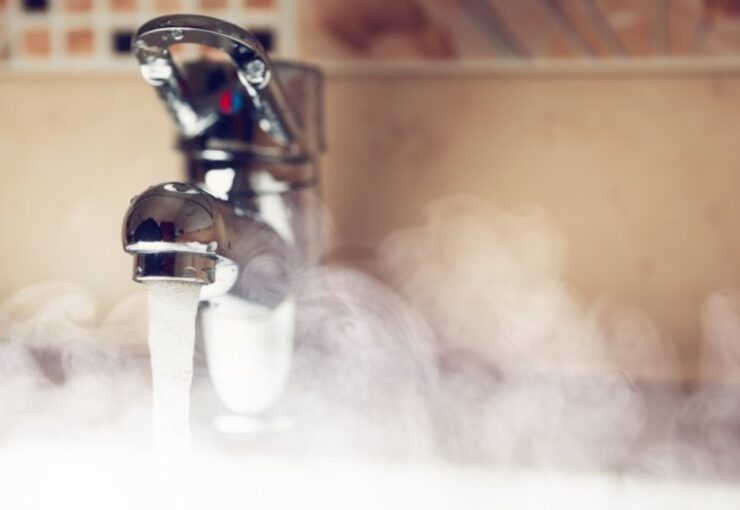
We suspect you love showering for hours with extremely hot water, but you have to know that that pleasure costs you a lot. Water heating is creating a huge difference in your electricity bill/ But don’t worry, there are ways of reducing your expenses without buying an energy-efficient water heater.
The first method implies adjusting your habits when you are in the shower – simply don’t use so much hot water. The second idea is to turn down the thermostat on your water heater or to insulate the entire water heater as well as six feet of cold and hot water pipes.
If, however, you already decided to purchase a new, energy-efficient heater, make sure to buy a model that will meet all your needs. For example, if you have a large family, don’t pick the tankless water heater because although it will use the energy more responsible and efficient, it won’t be able to handle simultaneous and multiple usages. And prepare yourself that they will cost more than regular water heaters, but they will last 10 to 15 years longer, and they will save you between 10 and 300 percent of electricity.
8. Upgrade HVAC System
The HVAC system is a system that unites heating equipment with air conditioning and ventilation. If you upgrade it to be more energy-efficient, you will save a significant amount of money each year.
We already said that heating is responsible for half of our average home energy usage. That applies especially to those households that are placed in northern parts of the world. But you should know that when it comes to the “Energy Star “label, there are two different specifications – one is characteristic for southerners and another for northern parts of the United States. The research showed that you could lower the usage of electricity for this matter by 16 percent, which is equivalent to around $100 yearly saving.
Air conditioning won’t spend so much electricity, it usually takes around six percent of the total energy bill, but if you upgrade it to “Energy Star “, they will be eight percent more efficient.
Given that the heating system and air conditioning can often be combined in one, you will be able to save up on both ends at the same time. And when it comes to ventilation, it is crucial to have a greatly isolated network that won’t have huge energy waste.
9. Insulate Your Home
If you have a desire to lower your expenses and learn how to conserve energy, you have to think about proper insulation. It is a key to having an energy-efficient home because it will make sure the heat stays inside the walls during the cold days, and that heat from the outside doesn’t enter during the hot summertime.
Depending on where you live, in what region temperature, and climate-wise, there are different R-values that are recommended.
When building a house, it is necessary to insulate all walls, floors, attic, basement, and crawlspace. That way, you will create a barrier between the outsides and your house, which will be significant both during summer and wintertime.
There are different methods and materials you can use to do that, but the most common are fiberglass, spray foam, and cellulose. It is especially important to make sure your attic is insulated, because the hot air inside the house is always rising up, and escaping through small openings.
10. Weatherize Your Home
Weatherizing, or as it’s also called sealing air leaks around the home area, is another way of reducing energy waste. The air will mostly leak through doors and windows, and it is not hard to get why, so you need to make sure to prevent that by ensuring there are no cracks between the doorframe or window and wall or vent.
In order to achieve that, you can use the caulk, especially if we are talking about stationary objects like the window frame, or whether stripes for moving objects, such as operable doors and windows.
Those are not expensive solutions, and you can see them as a good investment since you will be able to return the money back in less than a year. To be sure you will lose as little energy as possible, you should think about weatherizing all the places you can in your household.

